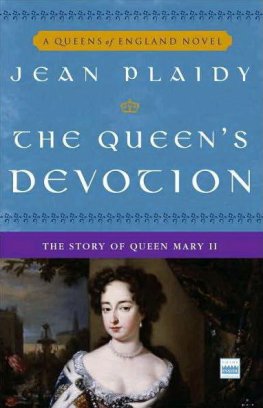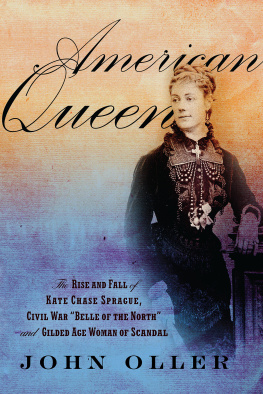
This edition is published by Papamoa Press www.pp-publishing.com
To join our mailing list for new titles or for issues with our books papamoapress@gmail.com
Or on Facebook
Text originally published in 1935 under the same title.
Papamoa Press 2018, all rights reserved. No part of this publication may be reproduced, stored in a retrieval system or transmitted by any means, electrical, mechanical or otherwise without the written permission of the copyright holder.
Publishers Note
Although in most cases we have retained the Authors original spelling and grammar to authentically reproduce the work of the Author and the original intent of such material, some additional notes and clarifications have been added for the modern readers benefit.
We have also made every effort to include all maps and illustrations of the original edition the limitations of formatting do not allow of including larger maps, we will upload as many of these maps as possible.
KATE CHASE
DOMINANT DAUGHTER
THE LIFE STORY OF A BRILLIANT WOMAN AND HER FAMOUS FATHER
BY
MARY MERWIN PHELPS
TABLE OF CONTENT
Contents
TABLE OF CONTENT
DEDICATION
TO MY SISTER
OF THE BRAVE SMILE AND THE HELPFUL HAND
FOREWORD
The Chase Papers in the Library of Congress furnished an enormous mass of documentary ore from which to hew out this dual biography of Kate Chase and her father. Though three lives of the great statesman himself are available, they deal chiefly with the man as a public leader rather than a private individual. The present volume attempts to delineate his character, his motives and ideals and, above all else, his domestic and affectional tiesthe man himself detached as far as possible from his political life.
The firsthand material from which to recreate Chase, the man, almost unlimited as it is, covering fifty years from his youth to old age, yields little data concerning the brilliant daughter, Kate. She herself left little beyond some half-dozen letters, precious nuggets of gold to the biographer. Only through persistent research has the author been able to present a portrait of this fascinating woman and her distinguished father. Here they stand, arm in arm, awaiting favorable reception from both students of history and lovers of romance.
ACKNOWLEDGEMENTS
The number is legion of those who have contributed towards the completion of this book and to whom grateful appreciation should be extended. The unceasing courtesy and helpfulness of Librarians wherever aid was sought, the New York Public Library and the Library of Congress, the Pennsylvania Historical Society and the Rhode Island Historical Society, places the author greatly in their debt. Thanks are specially due to the relatives and friends of Kate Chase who granted interviews and answered letters relative to the life and character of the subject; also to the many former students of the Haines School who responded graciously to the questionnaire sent to gain information of that famous institution of the Middle Nineteenth Century.
The invaluable service of friends and critics who generously gave their help in the revision of the text, and that of writers and historians whose kindly interest led them to examine the manuscript and proffer advice and encouragement, can never be forgotten.
To name all those who in one form or another have contributed to the making of the book is not possiblethe list is too long. Suffice it to say that each and every one is gratefully held in memory by the author.
LIST OF ILLUSTRATIONS
Kate Chase
Catherine Garniss Chase. From a painting owned by The Chase National Bank of the City of New York
Salmon P. Chase. From a painting owned by The Chase National Bank of the City of New York
Henrietta B. Haines
Home of Governor Chase, Columbus, Ohio
Captain William Sprague
Kate Chase in Camp
The Secretarys Daughter
Senator William Sprague
The Chase-Sprague Mansion
Salmon P. Chase
Kate Chase in Post-War Days
Canonchet
Kate Chase as Mary, Queen of Scots
Roscoe Conkling
Edgewood
IBACKGROUND
ON an early April morning, 1830, a tall, eager-eyed young man of twenty-two stepped off the gangplank of an Ohio River steamer at Cincinnati onto the bustling wharf of that metropolis of the West. Five days before, he had started out from Washington City by stage, through mud hub-deep that soon threw the horses and upset the coacha common occurrence at this time of year. Salmon Portland Chase, we must believe, took the exigencies of travel with more philosophic calm than did the aspersive Englishwoman, Frances Milton Trollope, who but a few days previously had covered the same route in the opposite direction: Cincinnati to Wheeling by boat, thence to Baltimore over rough mountain roads that tossed the passengers about like a few potatoes in a wheelbarrow.
Young Chase from early boyhood had been inured to hardship. As a boy of twelve he had left his mothers home in New Hampshire for the wilds of the Ohio frontier, going by flatboat and horseback to reach the settlement where Philander Chase, Bishop of the Episcopal Church, had founded a boys school. Uncle Philander had offered to take the fatherless nephew and educate him, and the zealous priest did not fail in his duty as he saw it, though the boy paid well for his training. Milking, going to mill and bringing back the meal before breakfast was a not unusual opening of the days program. After morning prayers came lessons. Latin was the main course of the Bishops menus provided for the young boys in his charge, a Dr. Blimber diet that demanded chiefly the dead languages. Uncle Philander wished to make a clergyman out of his nephew, and to that end crammed him with indigestible theology, such as Grotius de Veritate Religionis Christinae.
That the lad might become duly humble under the scourgings of life, he was punished for slight misdemeanors quite out of proportion to the crime. On one occasion he was forced to rise before daylight to bring into the house an enormous pile of wood. Salmon was not lacking in proper spirithe had once kicked a boy who called him Yankeeand while he worked he rebelled within; and when Eleazer Hubble, a paying pupil and a sneak, came along and saluted the culprit he spurted out his spite against the Bishop with, Hes a darned old tyrant, a remark promptly reported to the Headmaster. Young Chase was instantly put in Coventrythat is, no one was permitted to speak to him nor he to anyone. After a few days of this humiliating ostracism he confessed himself wrong, a lie he all his life regretted. When Bishop Chase moved to Cincinnati as president of the newly founded college, the nephew accompanied the family and was enrolled as freshman and soon promoted to sophomore. Salmons classical fare was doubled. He was given a Latin quarto parchment to masticate. He pronounced an oration on Saint Paul and Saint John in original Greek, to the great pride of the Bishop. The young boy lived the life of a recluse. Social recreation was taboo. One evening, hungering for company, he called on the rector of the parish, and was severely punished for it.














